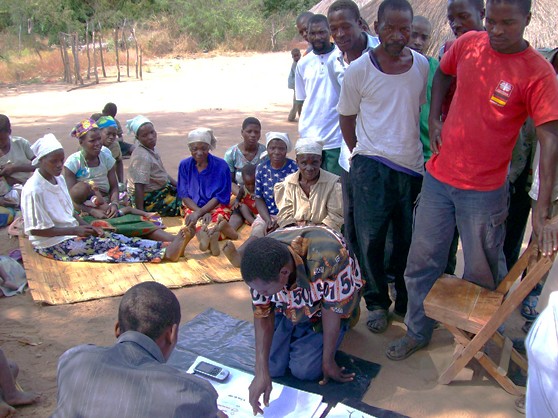 National governments across the world continue the slow march toward legislating gender equality, but in countries with gendered patterns of access to information, women are one of the first groups to lose out on their legal rights. In fact, the United Nations (UN) has declared lack of access to information to be the third major challenge confronting women in developing countries, after poverty and violence. [1] While the situation varies from country-to-country, gaps in literacy and gender discrimination are two of the most pervasive barriers that prevent women from accessing critical legal information.
National governments across the world continue the slow march toward legislating gender equality, but in countries with gendered patterns of access to information, women are one of the first groups to lose out on their legal rights. In fact, the United Nations (UN) has declared lack of access to information to be the third major challenge confronting women in developing countries, after poverty and violence. [1] While the situation varies from country-to-country, gaps in literacy and gender discrimination are two of the most pervasive barriers that prevent women from accessing critical legal information.
Literacy has a role that extends beyond the basic ability to read. It can also help a woman gather the social support and confidence necessary to act upon legal rights.[2] In the current situation worldwide, only 88 adult women are considered literate for every 100 men and this ratio worsens in low income countries like Bangladesh (62 to 100) and Pakistan (57 to 100). Women in rural areas and those who are part of linguistic minority groups are even more vulnerable to legal illiteracy.[3]
Paternalistic attitudes in society may also prevent women’s access to and understanding of law. Social norms often keep women from using information technology, traveling alone to a legal clinic, or accessing legal representation in the court system. While many countries have emphasized gender neutrality in legislation, social gender biases may continue to play out in the discriminatory adjudication of court cases. Instances of discriminatory interpretations of law arise most often in cases of family law, marriage and divorce, and inheritance; all areas closely tied to a woman’s health and livelihood. [4]
A complex and deeply rooted issue, the lack of women’s access to legal information might improve with increased visibility of the problem, including men in the solution, and creative approaches to the delivery of information. The UN Beijing Platform for Action calls on governments to “ensure access to free or low-cost legal services, including legal literacy, especially designed to reach women living in poverty,” essentially extending their scope from merely enacting legislation to making sure it is implemented according to its intent.[5] Actors in civil society and in the private sector also have a role in bridging the gap between law and practice. How can we make the most effective coordinated effort? Some suggested best practices are:
- Involve men – gender equity in all dimensions, including access to legal information, will require substantial shifts from all members of society, male and female. Some men might be partners and advocates in the movement, while those who perpetuate inequalities might be targets for intervention.[6] The alternative, excluding men, could lead to hostile attitudes among men and ultimately hamper progress as women’s literacy programs in post-war Somalia found.[7]
- Get creative about disseminating legal information – “barefoot” lawyers, rural radio programming, and traveling skits are all innovative ways of disseminating legal information that can bypass literacy concerns.
- Integrate legal services for women – long convoluted processes and frequent breakdowns in the chain of justice make it especially daunting for women with multiple legal issues to seek and comprehend the necessary legal information. “One-stop shop” type programs can simplify the process for women, and some even provide complementary medical care and support.
- Invest in women service providers – gender-specific help desks or programs with more female representatives are more likely to be utilized by women seeking legal information.[8]
At the Landesa Center for Women’s Land Rights, we’re developing LandWise, an e-library designed to connect policymakers, researchers, legal practitioners, and women’s advocates, to free, reliable legal information and to each other.
How have barriers to legal information affected you or someone you know? What kinds of interventions have you seen, and how have they been successful or unsuccessful? We invite you to share your stories in the comments section below and help us more closely examine the unique barriers to women’s access to legal information that exist around the world.
